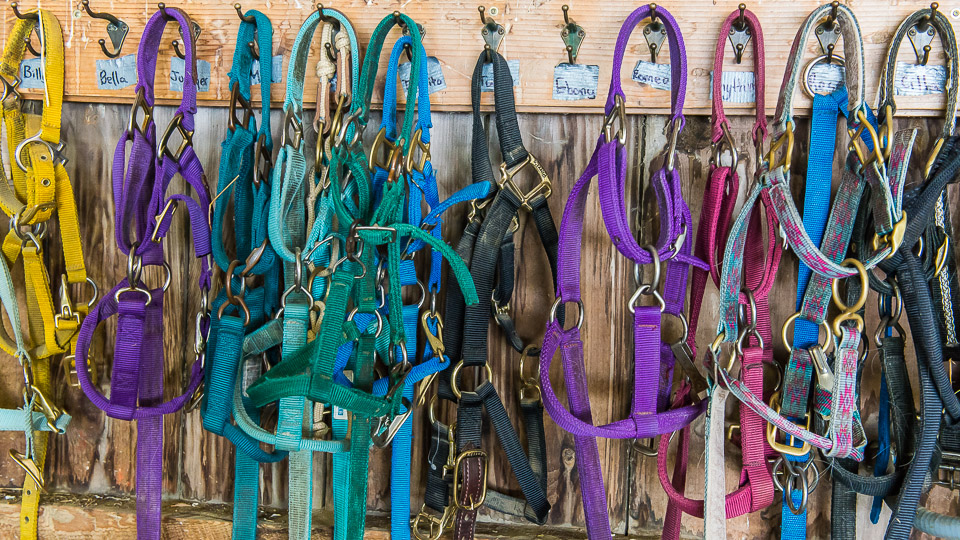
Horsemanship – Irrefutable Law 5
Become the leader. This law is based on a simple principle of horses. They exist in groups with a hierarchical structure. In other words, there is always one horse that is the leader and the rest are followers. How this is determined is determined by factors often missed by humans unless they carefully observe them. But like humans in a group, there is always someone who is the leader and the rest followers. It has been this way since grade school.
I define horsemanship as leadership. There are no other ways to look at this. If you can’t become the leader of your horses then they will become the leader of you. And not all horses are good leaders! One of the simplest principles I see missed in the barns I go to is that the horse includes YOU in the herd. Once understood, the fun begins because of the various combinations of herd structures along with the several different definitions of leadership. Let’s dig in.
**CONTINUED IN ARTICLE TAB**
Related material – Sometimes I have a lot of material here that I have written, podcasted, video blogs and other things. They will be listed in this tab.
Use the browser back button or menu to return to the index of topics.
⬇︎ CLICK ANY IMAGE BELOW TO REVEAL MORE INFORMATION ⬇︎ There are no images
Become the leader. This law is based on a simple principle of horses. They exist in groups with a hierarchical structure. In other words, there is always one horse that is the leader and the rest are followers. How this is determined is determined by factors often missed by humans unless they carefully observe them. But like humans in a group, there is always someone who is the leader and the rest followers. It has been this way since grade school.
I define horsemanship as leadership. There are no other ways to look at this. If you can’t become the leader of your horses then they will become the leader of you. And not all horses are good leaders! One of the simplest principles I see missed in the barns I go to is that the horse includes YOU in the herd. Once understood, the fun begins because of the various combinations of herd structures along with the several different definitions of leadership. Let’s dig in.
What is leadership? Many books have been written about this but for our purposes here, leadership is the ability to have those around you do something they would not normally do on their own. That is simple but how it is accomplished is more difficult. There are two parts to leadership: who YOU are and who are those you are trying to lead? A unit leader can yell, “Charge!” but will the troops follow him into battle? The conviction of the leader, the fairness of the leader and the respect he has from the followers is only half the equation. How he connects with the followers is determined by who they are on an individual basis. This law is about the first part – who YOU are – while the second part of this is discussed in the next law.
Recently a young girl had her pony in the cross ties. He pawed constantly and flipped his head up and down. The girl kept reprimanding the pony who stopped for a moment and then went back to his bad behavior. Soon after, the pony was with me standing in a stall on a lead connected to me. His head was lowered and he was very quiet and relaxed. The girl turned to her mother and asked why he was behaving for me. Wisely the mother said to ask me. When she did, I asked her that if she wanted the pony to behave calmly then she would need to purchase a mirror about her size and mount it to the barn wall. Anytime the pony acted up she needed to stand in front of the mirror and ask herself what she was doing to cause his behavior. While she did not understand this, the mother smiled at me with a thumbs up. My point is that most bad behavior with horses, dogs and humans is a reflection of your own thoughts and energy. Get that right and leadership just follows.
Confidence and arrogance look similar which causes confusion. They are very different. Confidence comes from experience, humbleness and gratefulness and these are the qualities of a leader. Arrogance comes from insecurity, meanness and a self centered outlook of the world. Guess which one the horse likes better? Guess which one they will follow? I only want to talk about confidence.
Becoming confident comes with time but there is a short cut some people call the “fake it till you make it” process. This is where the mirror comes in handy. Look at yourself. Find your kindness and fairness. Find your strength and your vision of how you want things to be. Find the peace inside of you and forget all other distractions. Learn to form an energy that is as low as possible. I’ll talk more about energy in Law 9 but for now, focus on this one thing. The elimination of all doubt, worry, fear and anxiety.
Fear is the biggest killer of leadership. If you are afraid of a horse then you should not be working with them. If you have any doubt of the outcome of your existence with horses then you should leave horses now. If you have any worry that you will become hurt or that things will turn out badly then find something else to be around. Anxiousness is the accumulation of doubt, worry and fear wrapped up in a package that feeds your negative energy. Throw that package out. Remove the word from your vocabulary. Understand that excitement and anxiousness seem similar but they are far from equal. Be excited – it is a good energy to have.
Stand in front of the mirror and say, “I have no doubt, worry, fear or anxiety.” Then breathe deep breaths until you become calm. Breathing is actually the body’s route of excreting adrenalin (the hormone of fear and preparation to run away). In time you can achieve this instantly. As soon as you do, the horse (and the people around you) will calm down, focus and accept your leadership.
Now for the other little thing I see almost ALL horse owners do. Nagging.
There are two types of ways to talk around a horse. The first is coaching. This is when the owner says things like: “It’s OK” “It’s alright.” “This won’t hurt.” “He won’t hurt you.” “This will be over soon.” “Work with me,” “I’ll give you carrots when we’re done.” On and on the incessant nagging continues. Most are lies. The horse hates this type of communication. They are not stupid and coaching only works when someone asks you for help. Coaches without someone asking to be coached are just naggers and NO BODY likes to be nagged.
The other form of communications is cheerleading. Here are some examples: “Good boy!” “You’re so brave!” “I knew you could do this!” “You’re the best!” “I love you!” Thank you!” This last one, “Thank you,” I use a lot. I also tell them I am grateful for them helping me and tell them how much I appreciate this opportunity or time together. If you don’t think this works just try it once. You can try it on a horse or a human but try it and see what happens. When I ask horse owners to do this as I am working on their horses the results are no less than a miracle. The owner sees it and they swear to me they will never coach again, though it is hard for many.
Becoming the leader is all about earning the respect of the horse. Once gained, the horse will do almost anything you ask but not always. Leaders must remember that to remain the leader the rules need to be enforced. This is called discipline and is a corrective measure to exert your authority. It is not permission to abuse. Without discipline there is anarchy (a group without a leader – a free for all) and with anarchy comes injury and abuse. Anarchy and the inability to exert authority usually comes from fear, worry, doubt and anxiety. Leadership comes from confidence and so does discipline. You can look at discipline as coaching but in this case, the rules of respect, when broken, require it.
The art of discipline is simple. Make it quick and effective and then let go. Most people don’t do this. Instead they poke and nag which just irritates the horse more. Worse, it can encourage and reward the continuation of bad behavior. Either ignore the bad behavior, start rewarding (cheerleading) the things he is doing right or effectively discipline the horse to stop it. Choose the battles wisely. If it really is nothing, ignore it. If it is bothersome, figure out why the horse is doing it and change it. Remember the horse fidgeting on the cross ties with the young girl? She continuously rewarded the bad behavior with ineffective movements and voice commands the horse basically ignored. When he got with me his attitude changed drastically because he respected me instantly. He was drawn to my energy and knew that annoying behavior would not get him any reaction from me. Rather I heaped praises of thanks and gratitude on him as I worked with him which for him was refreshing and rewarding. I rewarded his good behavior.
On occasion a horse needs firm discipline and this is swift and immediate while not exceeding the energy that was behind the action. If a horse strikes at me or attacks me I will attack back swiftly and with efficient motions that most horse owners won’t even see. Sometimes it is just a stare through their eyes, a growl, or I set him back in a corner coming close to his face. However before any action is taken I find the time to understand why he behaved this way. If it was an accident due to an outside event then I need to show understanding. If it was just bad behavior then I need to exert an equal effort back. If it was from fear then I need to understand that any reaction from me will enhance his fear. More often than not I just talk using questions rather than coaching lectures.
Also remember that many horses that misbehave are actually just miserable with the root cause of most of them in their diet. If a horse has trouble focusing and is always not connecting to your efforts AND the horse is being fed grain, grain byproducts, treats, supplements and any other inflammatory ingredients, immediately stop feeding these. Just feed pasture and hay for 2 weeks. Almost every horse will soon become tolerant of what you are doing.
Find any underlying cause (diet, lack of sleep) and correct it. Work on yourself first. Become a leader by becoming confident. Look at yourself and say, “I have no worry, doubt, fear or anxiety.” then breathe and smile. You get to work with horses! How much luckier can we be?
- Additional tables
- Links to other in house articles
- Links to outside articles
- Reference material used in developing this topic.
There are no related articles here if you don’t see linked items.


Responses